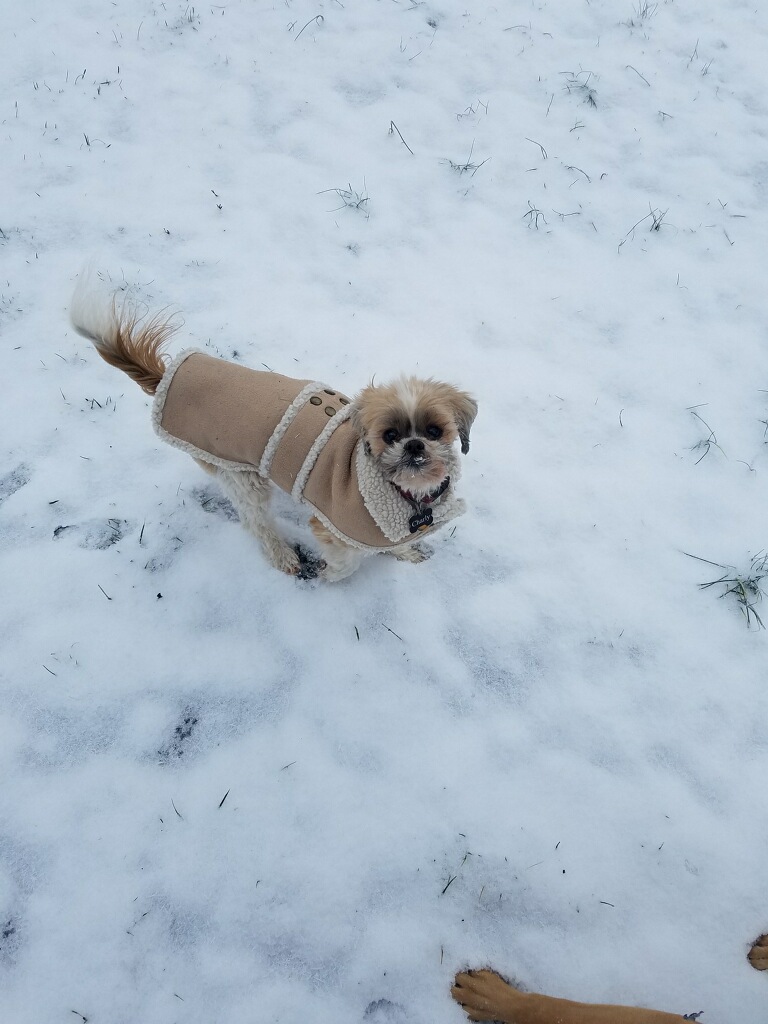Keeping a regular exercise routine can be difficult during the cold Ozark winters. Frigid temperatures, snow, and shorter days can make walking dogs in the winter challenging and sometimes dangerous. Following a few simple safety tips can help make this season easier for you and your pup.
- Keep toe hair clipped. Ice can accumulate in this hair, which can make walking difficult and even painful for your dog.
- Wear boots. Boots are a necessity for many dogs and can be helpful for all dogs in the colder months. Harsh weather can dry out paws and make your dog chill quicker. Boots will also protect your dog’s paws from dangerous chemicals like antifreeze and ice melt.
- Wipe paws after your walk. Use a warm wet washcloth post-walk to remove salt, ice melt chemicals, or other toxic substances from your pup’s paws. This will keep their paws in better condition as well as prevent them from possibly ingesting these chemicals when they lick their paws later.
- Keep it short. On very cold days, limit your walks unless your dog can handle it. Pay attention to your dog’s body language. If he keeps picking up his paws, licking his paws, whining, or shivering, take him home immediately. These are signs your dog is too cold! He may need a coat and boots.
- Wear a jacket or sweater. Some dogs have a fur coat that can withstand lower temperatures and wick away moisture, but many dogs do not. A coat or sweater can protect your dog from windchill or getting wet and chilled. It can also add a layer of insulation to keep him or her warmer for longer.
- Stick to the sidewalk. Unless your dog is a cold-loving breed, keep them out of the deep snow for long walks. If cold snow touches your dog’s soft and unprotected belly, they will get cold much faster.
- Don’t let your pup graze. Take extra precautions to make sure your dog is not ingesting anything he or she finds while out walking. Chemical ice melting products, road salt, and antifreeze are all very common finds on the winter sidewalks, and each can be quite dangerous for your dog.
- Pay attention to cues. While you should know what your dog’s breed says about his cold-threshold, you should also pay attention to individual signs. Dogs will let you know when they’ve had enough of the cold. You can absolutely let your dog play outside in the cold weather, but never leave your pet unattended for long periods, particularly if they are a small breed or a breed with little cold protection, even if they have a coat and boots.
- Keep your pup on a leash when outdoors. As tempting as it might be to let them romp through snowdrifts, those drifts could be hiding many potential dangers, and unleashed dogs are also at higher risk of running onto frozen bodies of water and falling through the ice. Always try to walk on plowed sidewalks when you can to reduce the potential of running into hidden dangers.
While there are challenges with walking your dog in winter, it is certainly possible to do it in a way that is safe and fun for everyone. Paying attention to his needs and comfort, as well as keeping a close eye on surroundings and exercising common sense, can all go a long way toward ensuring a safe and active winter!
Bonus #LifeHack: We can’t live without our YakTrax. They keep our team upright during winter walks. We highly recommend them to everyone who has to go out in the ice and snow!


